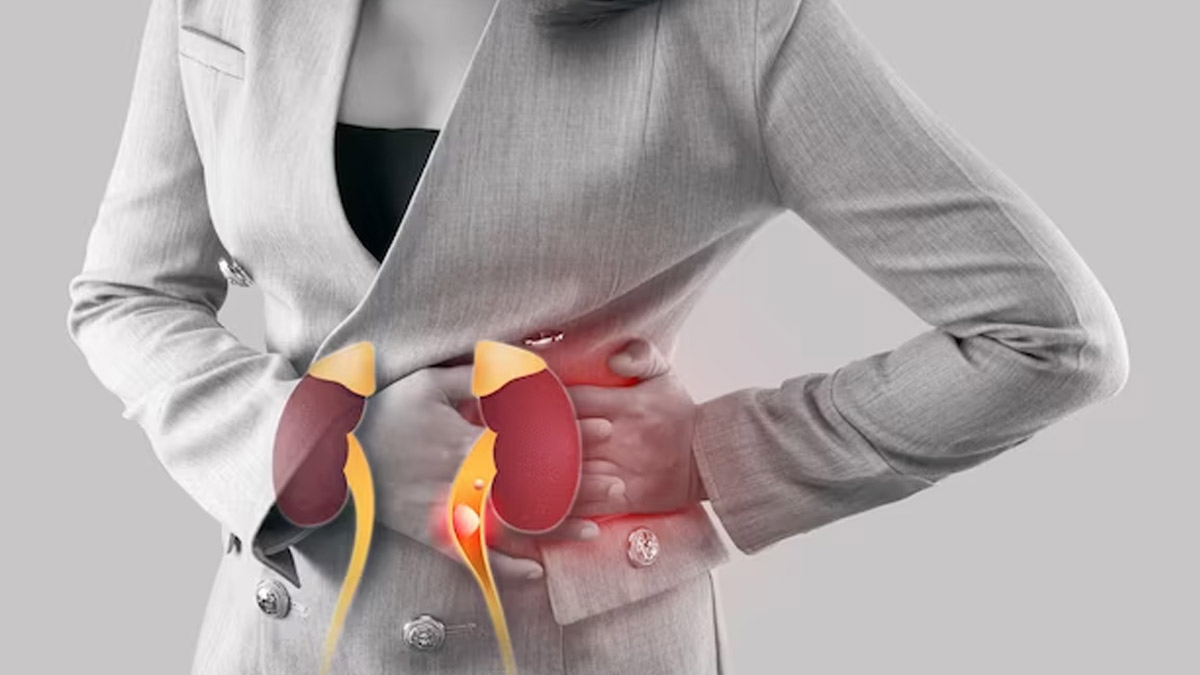
Kidneys are an integral part of our body. It helps remove waste products and excess fluid from the body, while also filtering and purifying the blood. However, it is prone to infection. A kidney infection can start in the tube that transports urine from the body or in the bladder. Also called pyelonephritis, it can infect one or both kidneys. Speaking with the OnlyMyHealth editorial team, Dr Upal Sengupta, Nephrology, Fortis Hospital, Anandapur, Kolkata, discusses the condition and lists down the symptoms associated with it.
Table of Content:-
Also Read: Obstructive Sleep Apnoea: How To Reduce Risk For Better Heart Health
What Is Pyelonephritis?

“Pyelonephritis is a serious condition that occurs when bacteria affects one or both the kidneys,” said Dr Sengupta, adding that it typically starts as a Urinary Tract Infection (UTI) that spreads to the kidneys.”
As per the doctor, there are two types of UTIs namely uncomplicated and complicated urinary tract infections. The former typically occurs in the lower urinary tract and can be effectively treated with antibiotics. However, it can reoccur if the person has a weakened immune system or uncontrolled diabetes. On the other hand, complicated UTI, such as pyelonephritis, is a more serious condition. The most significant risk factor for it is diabetes, said Dr Sengupta.
Types Of Kidney Infections
There are different variations of kidney infections. These include:
Acute Pyelonephritis
This is the most common type of kidney infection. It includes symptoms such as fever, chills, back or abdominal pain, frequent urination, and a strong urge to urinate.
Chronic Pyelonephritis
This refers to a long-term infection of the kidneys. According to Dr Sengupta, chronic pyelonephritis can be a consequence of urinary tract abnormalities, kidney stones, or repeated urinary tract infections. “In chronic pyelonephritis, there are two possible scenarios. First, there can be an acute active kidney infection, such as tuberculosis. Second, there can be a sequel of pyelonephritis, where recurrent pyelonephritis episodes since childhood have resulted in a reduction in kidney size. In the latter case, there may not be an active infection present in the kidneys, but the condition is classified as chronic pyelonephritis,” the doctor added.
Emphysematous Pyelonephritis
It is a rare form of kidney infection that involves the presence of gas-producing bacteria in the kidney tissues, which can be life-threatening.
Xanthogranulomatous Pyelonephritis
This is also a chronic form of kidney infection, characterised by the destruction of kidney tissue. Its treatment may include removal of the affected kidney.
“Anatomical abnormalities or obstructions in the urinary tract, such as a large prostate, urethral strictures, or ureteral stones that block the kidney tract, are known risk factors for developing kidney infections like Pyelonephritis,” said Dr Sengupta.
Also Read: Type 3 Diabetes: Expert Discusses What It Is, Symptoms, And Treatment Options
Symptoms To Watch Out For

Common symptoms of kidney infection or pyelonephritis include:
- Persistent urge to urinate, accompanied by pain or a burning sensation
- Cloudy, dark, or even bloody urine, a result of bacterial or blood cells presence in the urine
- Pain in the lower back or sides, just below the ribs, which may worsen over time
- High fever, accompanied by chills and sweating
- Nausea, vomiting, and a loss of appetite
The doctor added, “In elderly patients, symptoms of pyelonephritis may be subtle, with lethargy, fever, and loss of appetite being the main manifestations.”
Important Tests To Take

In case of symptoms, you can get the following tests to confirm your diagnosis or rule the condition out:
Urinalysis: This is the first test conducted to check for the presence of bacteria in the urine.
Urine Culture: This may be performed to identify the specific bacteria causing the infection. It helps choose appropriate antibiotic treatment.
Blood Tests: This form of testing may be conducted to assess the overall health of the patient and identify signs of infection.
Imaging Tests: It can provide visual information about the kidneys and surrounding structures. A common imaging technique used is a kidney ultrasound.
Kidney Biopsy: In rare cases, a kidney biopsy may be recommended to diagnose a kidney infection that is not responding to treatment.
Also Read: Multiple Sclerosis Can Cause Neurological Problems: Warning Signs To Note
Conclusion
If left untreated, kidney infections can take a discomforting turn. Consulting a doctor, who can evaluate the symptoms and recommend the appropriate tests, can help facilitate timely diagnosis and treatment. Treatment may include antibiotic interventions, the duration of which depends on the severity of the infection. “Serious cases often require 14 days of intravenous antibiotics,” concluded Dr Sengupta. However, consult your healthcare provider to get a diagnosis and treatment plan according to your specific situation.
How we keep this article up to date:
We work with experts and keep a close eye on the latest in health and wellness. Whenever there is a new research or helpful information, we update our articles with accurate and useful advice.
Current Version